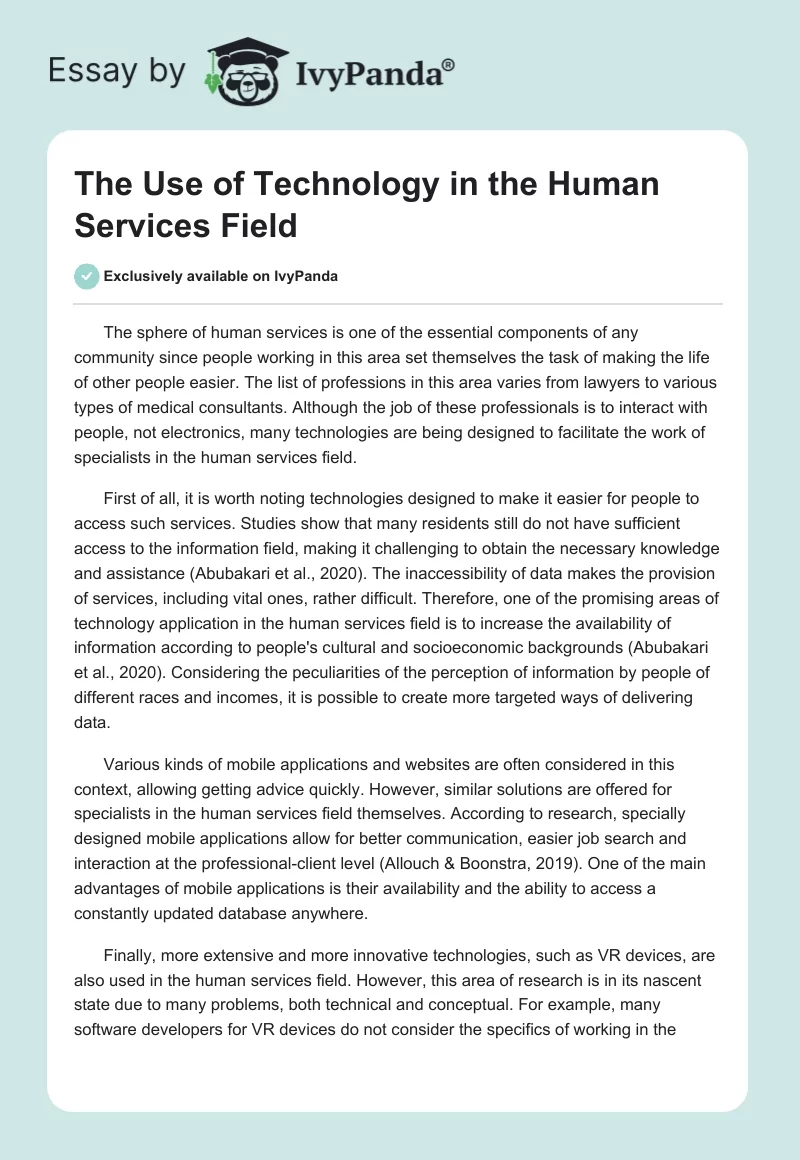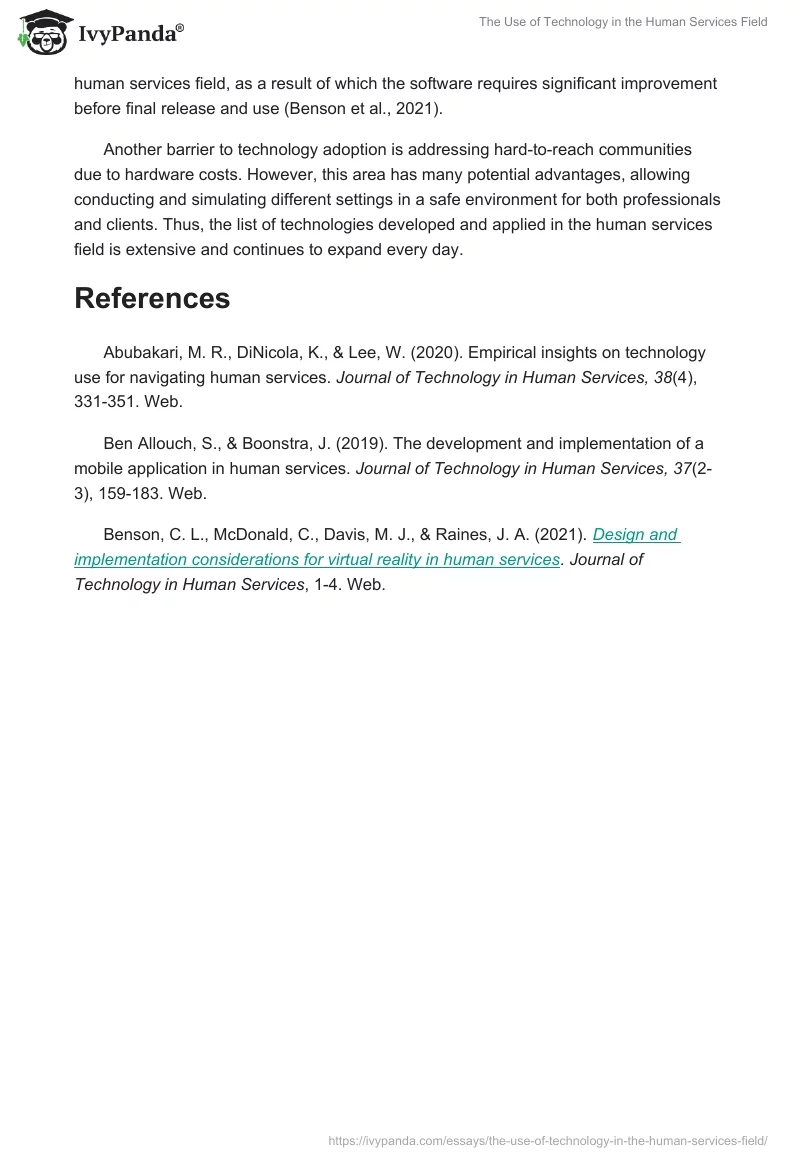The sphere of human services is one of the essential components of any community since people working in this area set themselves the task of making the life of other people easier. The list of professions in this area varies from lawyers to various types of medical consultants. Although the job of these professionals is to interact with people, not electronics, many technologies are being designed to facilitate the work of specialists in the human services field.
First of all, it is worth noting technologies designed to make it easier for people to access such services. Studies show that many residents still do not have sufficient access to the information field, making it challenging to obtain the necessary knowledge and assistance (Abubakari et al., 2020). The inaccessibility of data makes the provision of services, including vital ones, rather difficult. Therefore, one of the promising areas of technology application in the human services field is to increase the availability of information according to people’s cultural and socioeconomic backgrounds (Abubakari et al., 2020). Considering the peculiarities of the perception of information by people of different races and incomes, it is possible to create more targeted ways of delivering data.
Various kinds of mobile applications and websites are often considered in this context, allowing getting advice quickly. However, similar solutions are offered for specialists in the human services field themselves. According to research, specially designed mobile applications allow for better communication, easier job search and interaction at the professional-client level (Allouch & Boonstra, 2019). One of the main advantages of mobile applications is their availability and the ability to access a constantly updated database anywhere.
Finally, more extensive and more innovative technologies, such as VR devices, are also used in the human services field. However, this area of research is in its nascent state due to many problems, both technical and conceptual. For example, many software developers for VR devices do not consider the specifics of working in the human services field, as a result of which the software requires significant improvement before final release and use (Benson et al., 2021).
Another barrier to technology adoption is addressing hard-to-reach communities due to hardware costs. However, this area has many potential advantages, allowing conducting and simulating different settings in a safe environment for both professionals and clients. Thus, the list of technologies developed and applied in the human services field is extensive and continues to expand every day.
References
Abubakari, M. R., DiNicola, K., & Lee, W. (2020). Empirical insights on technology use for navigating human services. Journal of Technology in Human Services, 38(4), 331-351. Web.
Ben Allouch, S., & Boonstra, J. (2019). The development and implementation of a mobile application in human services. Journal of Technology in Human Services, 37(2-3), 159-183. Web.
Benson, C. L., McDonald, C., Davis, M. J., & Raines, J. A. (2021). Design and implementation considerations for virtual reality in human services. Journal of Technology in Human Services, 1-4. Web.


